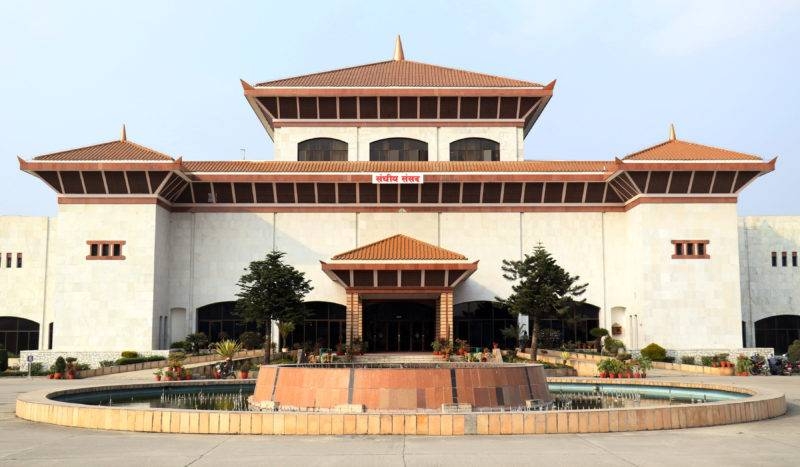The indelible permanent establishment

We have often noticed that popularity is the hallmark of legitimacy in party politics. If one pays close attention to the idea of popularity in party politics of Nepal, then one realizes that the leader concerned is popular because s/he engages in multiple forms of protectionism and clientele. These forms of patronage form the bedrock of the legitimacy for the leader. Therefore, it is apt to borrow two forms of classification that German Sociologist Max Weber suggests as the basis of legitimacy for authority—tradition and charisma. Of course, he has a third one too, legal-rational basis. But this option appears weak in case of legitimacy in the party system in Nepal.
Nepali leaders have often resorted to either tradition or charisma to secure their legitimacy. A section of the leaders have built a vast network and basis for legitimizing themselves by quite often resorting to their “contributions in the past” referring to their struggle in the underground period. The leaders of this genre use this not only as their electoral USP, but also as a basis to claim seniority and control the party mechanisms. There is another set of leaders who have used charisma as a basis for legitimacy. They are those individuals who use the charisma of their personalities to stake a claim for legitimacy and shore up their popularity. This group of leaders in today’s age of social media has an additional arsenal to boost their legitimacy by directly reaching out to their supporters. However, popularity alone is not enough. The party systems have their own logic which demands certain workings from the leaders to maintain legitimacy—some form of protection and patronage. Personality as process The arguments of the preceding section bring us to an important dimension of how permanent establishment comes into effect. Nepali political parties have long relied on personalities rather than formal institutions to give them a shape. This is partly to do with the socialization of the political parties. The current leadership of the major Nepali political parties has come of age by sharpening their political skills as underground outfits. Therefore, whatever shape these leaders provided based on either tradition or charisma, the parties took their shapes accordingly. Further, the practice of the same leader leading both the party and the government at the same time meant that s/he would remain powerful throughout and the party machinery would be subservient to the interest of that leader. Owing to these practices, the leader comes to acquire a larger-than-life image as s/he is the most resourceful person/s. Given the very informal nature of Nepali politics and society, it becomes incumbent upon the party cadre to develop close connections with such leaders in order to further his/her career. Therefore, the Nepali political parties have developed an institutional mechanism that revolves around certain personalities. War-like mindset The other characteristic that shapes the idea of permanent establishment is war-like mentality. Given the vertical and horizontal differences in the structure for gaining power, leaders demonstrate a war-like mentality to survive in the party. The vocabulary of the leadership that forms the permanent establishment often reeks of revenge and negation. They often resort to the idea of total or absolute control over party mechanisms. In recent years we have witnessed that the party conventions have often been converted into a mechanism to capture power. Very little or no deliberations have been occurring with regard to ideologies or policy directions for the party. A document presented by the incumbent is approved without any meaningful deliberation. This has to do with the way convention representatives are chosen. Oftentimes the powerful leaders within the party are able to buy their way with the monopolized resources at their disposal. Therefore, making sure that their loyalists get in as convention representatives. Hence, even the so-called democratic exercise is all but a sham. The war-like mentality is all pervasive. It is not only the senior crop of leadership who engage in such exercise, but also the so-called new generation. In fact, the latter group seeks to amplify the process of being part of the permanent establishment by resorting to the very means they once criticized. These groups of leaders if and when they make it to the leadership position are found blocking entry of the new cadre to that very process.
related news
Lumpy skin disease and its economic impact
July 10, 2023, 6:17 p.m.
Silver lining for Pancheshwar project
July 10, 2023, 6:05 p.m.
Private sector’s boost may spur economic rebounding
July 7, 2023, 4:47 p.m.
Three-way competition and Nepal
July 5, 2023, 4:28 p.m.
The unaccounted costs of a self-focused mindset
July 5, 2023, 1:49 p.m.
Nepal should adopt a multi-alignment policy
July 4, 2023, 11:36 p.m.
White man’s burden, brahminism and racial superiority
July 4, 2023, 6:05 p.m.
Is ‘left unity’ on the card?
July 4, 2023, 2:44 p.m.










Comments